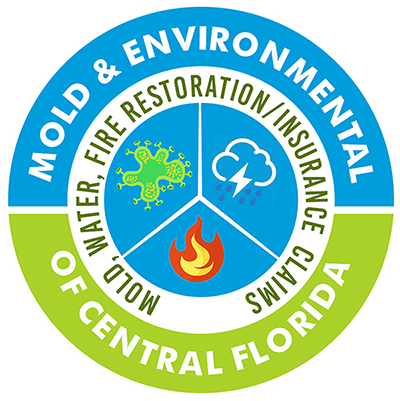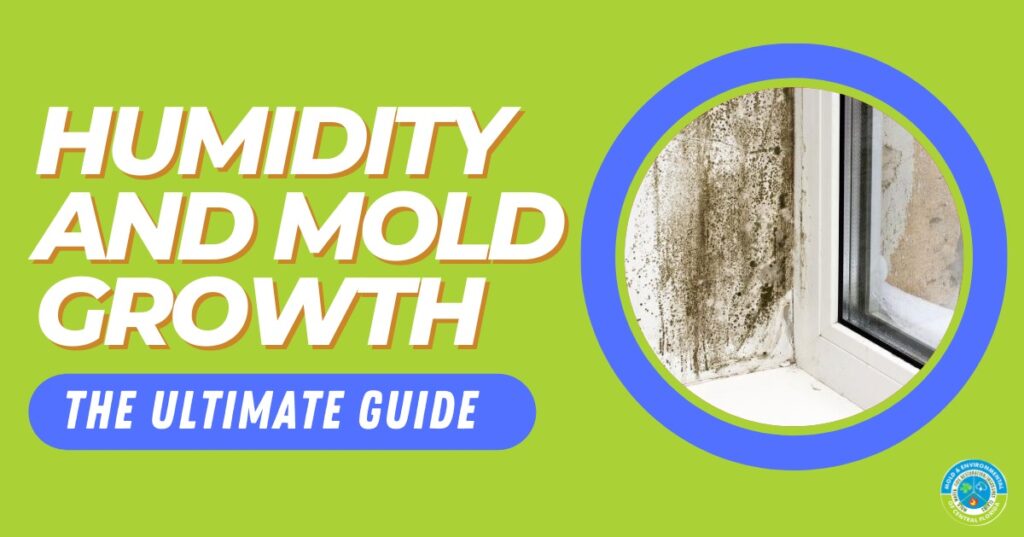How much moisture is sufficient enough to cause mold growth?
We have often heard about cases where mold grew without the slightest knowledge of why. Homeowners keep thinking of ways to prevent mold growth from their property, but eventually, they succumb to the damage of this fungal organism. It is crucial to understand that mold problems originate from minor problems like leakage of pipes, heavy storms, lack of ventilation, etc.
If you understand the moisture level needed for mold growth, you can solve this puzzle and save yourself and your loved ones. Moldandenvironmental.com provides complete mold-free solutions to ensure sustainable living. We provide mold inspection, testing, and remediation to prevent the attack of molds in the future. With years of professional experience, we understand that moisture and humidity can cause mold growth. Here is a 5-minute read to help you understand the sufficient moisture level needed for mold growth.
Molds and mildew
Molds and mildew are both organisms from the fungal family. Mold fungi are microscopic organisms that grow in moist environments such as soil or water. They reproduce by budding and can cause problems if they invade buildings where people live. This fungal organism propagates through tiny spores that can cause severe damage. When inhaled, spores reach the bronchus, causing severe breathing difficulties.
Molds and moisture
If you see mold growing on wood or paper, moisture is trapped between the layers of material and must be removed before it causes damage. So, why do molds grow under such conditions? Because they thrive in warm, humid conditions. This process occurs very slowly, so it often goes unnoticed until it has progressed far enough to cause damage. Unfortunately, the time you start visualizing the molds is the time when it has become too late.
Temperature and humidity needed for mold growth:
With relative humidity exceeding 55%, mold develops most quickly between 77-86 degrees Fahrenheit. It’s essential to remember that mold may live in practically any environment. Mold exists naturally in our environment, and its average concentrations do not cause any damage to humans. Mold colonies fall dormant at colder temperatures, which reduces spore output. When the spore production is lower, the spread and its harmful implications are lower too. Similarly, the conditions are ideal in a warm and moist environment, and so is mold growth.
Coincidentally, the most comfortable temperatures for existing humans are between 77 and 86 degrees Fahrenheit. Thus, mold tends to grow in the climatic conditions we consider ideal for ourselves too. Florida is particularly prone to molds because it provides the right temperature and weather conditions for mold growth. The most straightforward strategy to prevent mold development in your house is to maintain a low relative humidity instead of having the temperature savagely hot or bitterly cold.
Humidity levels needed for mold growth:
Humidity refers to the amount of water vapor in the air. In general, high humidity increases the likelihood of mold growth. The relative humidity should be between 35%-45% to prevent the easy spread of mold spores. However, the mucous membranes in your body will have a difficult time if the air is too dry. You should ensure that the relative humidity where you live is at least 35%.
Keep in mind that relative humidity should be kept much below 55% because that is when mold develops most effectively. The majority of contemporary dehumidifiers allow you to select a threshold humidity level. To prevent mold from forming in your house, set yours to about 40%.
Common signs of mold growing on your property
There are several common signs of mold growth, including:
- Visible growth: Mold can appear as black, white, orange, green, or purple spots on surfaces or materials.
- Musty or moldy odor: A strong, musty, or moldy smell can indicate the presence of mold.
- Water stains or discoloration: If you notice water stains or discoloration on walls, ceilings, or other surfaces, this could be a sign of hidden mold growth.
- Unpleasant odor: Mold has a robust earthy odor that can be detected if mold grows. It is crucial to identify this smell and take immediate action for it because this smell is strong when things have gotten out of hand.
- Peeling or bubbling paint or wallpaper: If paint or wallpaper is peeling or bubbling, this could signify moisture buildup and potential mold growth.
- Allergic reactions: Some people may experience allergic reactions near molds, such as sneezing, coughing, itchy eyes, or difficulty breathing.
If you suspect that you may have a mold problem in your home, it is essential to address it as soon as possible. Mold can cause serious health problems and can also cause damage to your home.
Mold’s impact on your health
Mold exposure can have a range of adverse health effects on humans, especially for people who are allergic to mold or have a weakened immune system. Some common health problems associated with mold exposure include:
- Allergic reactions: Mold can cause allergic reactions in people already dealing with allergies or breathing issues, such as sneezing, coughing, itchy eyes, redness of the skin, skin irritation, and shortness of breath.
- Respiratory problems: Mold can irritate the airways and cause respiratory problems, such as coughing, wheezing, and difficulty breathing.
- Infections: Some molds can cause infections, especially in people with compromised immune systems.
- Eye irritation: Mold can cause eye irritation and redness.
- Skin irritation: Mold can cause irritation, rashes, and other skin conditions.
It is important to address mold growth in your home as soon as possible to minimize exposure-related health risks. If you are experiencing any of the above symptoms and believe that mold may be the cause, it is essential to seek medical attention.
Mold’s impact on your property
Mold also has a significant impact on your property. Withering and flaking off paint, spots on the wall, and moldy odor can leave a bad taste in the mouth. The property value is lowered due to this exterior, making it equally important for residential and commercial property to be monitored by professionals for mold inspection, testing, and complete remediation.
If you are looking for professional guidance for preventing mold growth from your property, call us today, and we will be there for you. Our experienced consultants provide free telephonic consultation, after which we visit your doorsteps in less than 30 minutes. We aim to provide convenience and satisfaction to our clients around Florida. With this goal in mind, our team ensures that we provide tailor-fit solutions to your property to prevent damage.
Call us now at (754)-703- 8317 or leave us an email at moldandenvironmental@gmail.com, and we will be there for the rescue.

